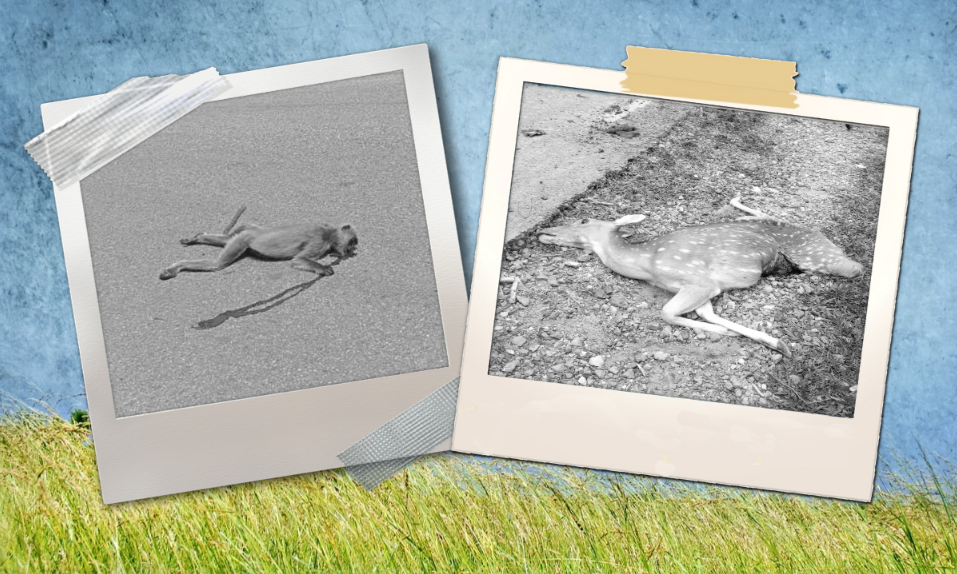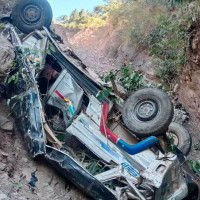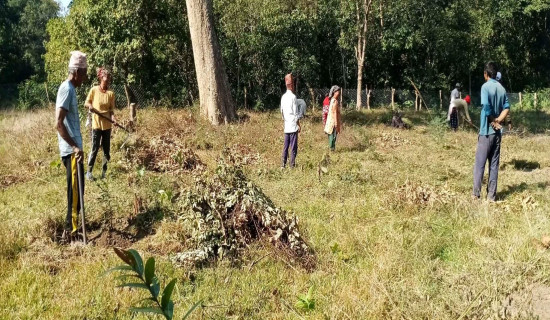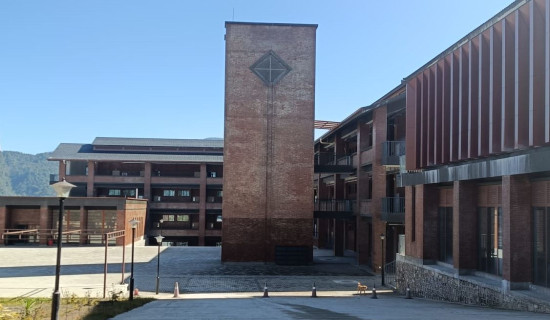- Saturday, 13 December 2025
Food scarcity in forests pushing wild animals into human settlements
By Hari Prasad Koirala,Urlabari, Mar. 2: Wild animals are finding it harder and harder to find food in dense forests, their habitat, because of human encroachment. With the number of forest-dependent people increasing in recent times, wild animals are facing a food crisis. Another risk is the policy of community forests banning cutting down of big trees in the name of scientific forest management to protect only a few species of trees like sal (Shorea robusta), karma (Nauclea parvifolia) and asna (Terminalia elliptica).
Every day people enter the forest to pick niguro (wild edible fern), to collect leaves to make traditional plates and to collect firewood, as well as to extract red and white soil to paint their traditional houses, among other purposes.
Not only human encroachment, poaching and smuggling of wild animals have also increased recently. According to Ram Lakhan Thakur, Information Officer of Division Forest Office Morang, in the financial year 2020/2021, they arrested and filed a case against smugglers for trafficking one nilgai (antelope) and two chitals (spotted deer).
According to Thakur, wild animals are safer in human settlements than in forests. The wild animals caught by hunters found fleeing to human settlements attest to this fact, he said. One nilgai was found in Rangeli-3 and another within the compound of Biratnagar Airport two years ago.
Even the birds and turtles found in the forest in the past have now started to appear in the villages. He said lizards, golden monitors, eagles and other protected animals have been rescued by the Wildlife Division of the Forest Office.
He said, “There are more incidents that do not reach us. In the financial year 2019/2020, seven species of wild animals were found in human settlements, according to the statistics of Division Forest Office Morang.”
Forest has no vegetation except sal, karma and asna
The concept of community forest started in 1996. Since then, data on the expansion of forest areas in Nepal has been published every year. According to the activists involved in the forest expansion campaign, community forests have made a significant contribution to forest expansion.
However, the campaign only planted trees of species useful for human use, making the forest area unsuitable for wild animals, said Aagni Poudel, secretary of the Federation of Community Forest Nepal, Province 1. “The forest is man-made, and the lack of fruit-bearing vegetation has pushed the forest-dwelling wild animals, including monkeys, towards human settlements and highways in search of food,” he added.
Not just the tall trees, but also the bushes protect the environment where wild animals roam freely. Those plants were also divided in the name of many campaigns. Small bushes were destroyed to make vegetable charcoal, he said.
According to monkey expert Dr. Sabina Koirala, the monkeys have entered human settlements because their natural habitat has been destroyed. Not just monkeys, rabbits, porcupines, jackals, and leopards have also entered the village, she added.
Dr. Koirala said that our environmental balance has been disturbed by the understanding that forest means only large trees of sal, karma and asna. Monkeys can change their natural habitat, now they have adopted the environment wherever they go, she added.
However, if the habitat of other wild animals is not protected, they will surely disappear, she warned, saying that the bushes should be protected for the habitat of wild animals including monkeys.
Indra Prasad Koirala of Kanepokhari-7 in Morang said until 1989, when they used to go to the forest for grazing cows in the East-West Highway area of the district, they never had to carry lunch. “We used to collect bananas, mangoes, monkey nuts, berries, Malabar plum, Bengal quince, mulberry, and Schleichera oleosa in the forest for lunch. We used to eat the fruits thrown by the monkeys,” he said.
But now, these fruits are not found in the forests. Wild animals enter the village in search of food, he added.
Wild animals die in road accidents every day Monkeys, deer and antelopes die in accidents daily on the East-West highway between Belbari in Morang and the Sunjhoda River in the east of Pathari-Shanishchare.
Division Forest Office Morang has not kept statistics of dead and injured wild animals in road accidents. However, in the highway area between Betana and Sunjhoda, one wild animal dies every week, according to rangers in the area.

















